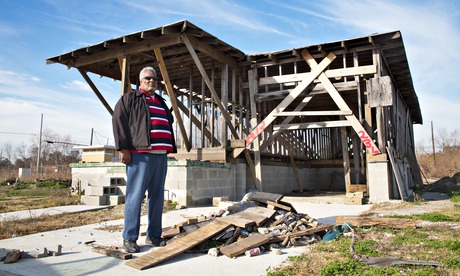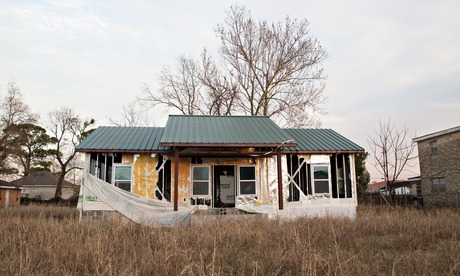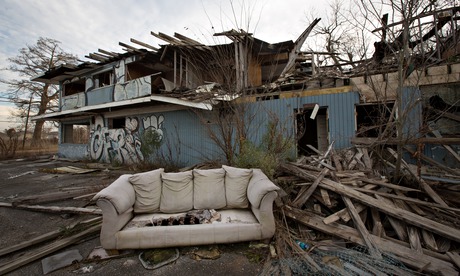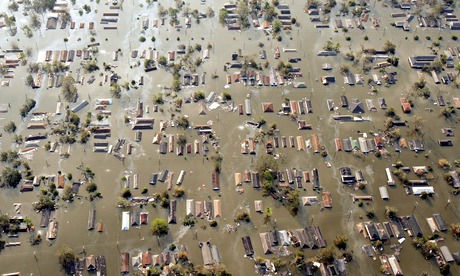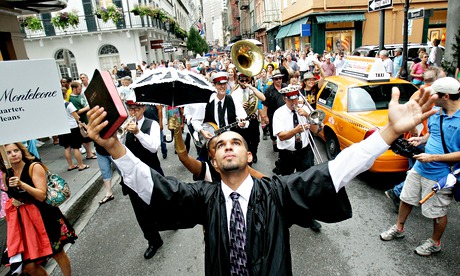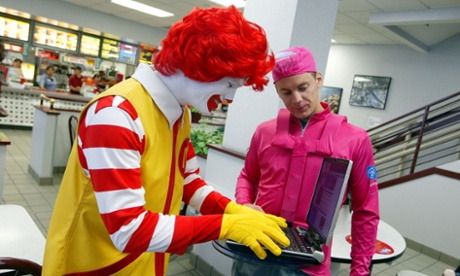Newspapers give Labour's 50p tax rate proposal the thumbs down
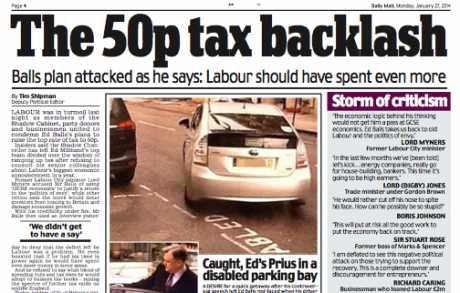
The Daily Mail's page 4 coverage of the 50p tax rate announcement by Ed Balls
The announcement by Ed Balls that Labour
will reintroduce the 50p top rate of income tax for those earning over
£150,000 went down very badly with the majority of today's national newspapers.
Several carried news stories nosing off on the negative reaction from business, such as the Financial Times. Its splash was headlined "Businesses blast 50p tax plans by Labour". Columnists railed against Labour's decision. Most leading articles were hostile.
The Times's leader, Less tax, more growth, recognised that it would have political benefits, pointing out that 60% of the people polled in recent research supported a 5% increase in the top rate.
But it thought the rise "stupid" from an economic point of view because "it will raise little if any extra money for the exchequer, while punishing those entrepreneurs who cannot go elsewhere and sending an unmistakably hostile signal to those who can." It concluded:
Its leading article, Labour turns back the tax-and-spend clock, argued that Balls's "attack on commerce is a reminder that Labour is no more pro-business than a burglar is pro-private property."
It thought "the pledge to put the tax rate back to 50p is emblematic of Labour's failure to develop a coherent economic policy now that its attack on the government has been blunted by signs of recovery" and continued:
It recognised that "taxing the rich would go down well with Labour's core vote" but believed there was "a whiff of desperation" about the announcement:
It accused shadow chancellor Balls and Labour leader Ed Miliband of resorting to an old tactic: "when all else fails, pander to core Labour voters' envy of the rich."
In so doing they "remain in blinkered denial of the folly of their old-fashioned, business-bashing, tax-and-spend socialism."
The Sun ("Labour tax con") contended that Labour's "popular ideas" - "freezing energy prices, ordering the break-up of the banks, and now increasing taxes on the rich" - all unravel once "put under the spotlight." It said:
He called the rate rise pledge "economic illiteracy" and "a dramatic symbol of how far Miliband and Balls are trying to pull Labour to the left." He continued:
"No matter how it is dressed up, the confiscation of wealth by the state never works. Such an approach undermines enterprise and breeds depression."
Then, after reminding his readers of Britain's dramas under Labour in the late 1970s, he wrote:
Its leader said: "Particularly distasteful are those who greedily defend their own high earnings while lecturing the working poor to tighten their belts because welfare cuts are needed, again supposedly in the national interest."
The 50p rate "will raise funds to cut the deficit. It is both fair and popular. Opponents should be required to declare any financial interest."
The Guardian, in an editorial headlined "More than small change", argued that "the commitment to a new tax rate is warmly welcome" despite no-one knowing "how much will be raised." It continued:
In a two-paragraph letter to the Telegraph, more than 20 self-described "business leaders" said "higher taxes will have the effect of discouraging business investment in Britain... a backwards step which would put the economic recovery at risk and would very quickly lead to the loss of jobs."
Among the signatories were Karren Brady, Anya Hindmarch, Luke Johnson and Sir Stuart Rose.
Several carried news stories nosing off on the negative reaction from business, such as the Financial Times. Its splash was headlined "Businesses blast 50p tax plans by Labour". Columnists railed against Labour's decision. Most leading articles were hostile.
The Times's leader, Less tax, more growth, recognised that it would have political benefits, pointing out that 60% of the people polled in recent research supported a 5% increase in the top rate.
But it thought the rise "stupid" from an economic point of view because "it will raise little if any extra money for the exchequer, while punishing those entrepreneurs who cannot go elsewhere and sending an unmistakably hostile signal to those who can." It concluded:
"A return now to punitive taxation would be downright perverse. Whatever the precise effect of Labour's 50% tax experiment, there is every reason to believe it inhibited overall growth. To reintroduce it when Britain's recovery will still be fragile would be at best unwise, at worst disastrous."The Daily Telegraph, which carried a page 1 story headlined "Bosses blitz Labour's 50p tax rate", agreed.
Its leading article, Labour turns back the tax-and-spend clock, argued that Balls's "attack on commerce is a reminder that Labour is no more pro-business than a burglar is pro-private property."
It thought "the pledge to put the tax rate back to 50p is emblematic of Labour's failure to develop a coherent economic policy now that its attack on the government has been blunted by signs of recovery" and continued:
"As David Cameron will say to the Federation of Small Businesses today, we rely on the country's wealth creators to produce the jobs on which our long-term security relies. It is, frankly, insulting of Mr Balls to suggest that the high earners who provide most of the tax revenues have not played their part in the recovery.The Independent was unimpressed too as its editorial, "The politics of Ed Balls's pledge to reintroduce the 50p rate may be sound. But the economics are not", made clear.
He denied on the BBC's Andrew Marr Show that Labour was going back to the Eighties and Nineties. That's true – it is reverting to the high-tax era of the Sixties and Seventies instead."
It recognised that "taxing the rich would go down well with Labour's core vote" but believed there was "a whiff of desperation" about the announcement:
"Ominously for Mr Balls, Lord Myners, a former Labour minister under Gordon Brown, has already condemned a return to the 'politics of envy'... But the real problem about restoring the 50% top rate is not so much that it is a sop to the envious; it is that it would not do as Mr Balls claims...The Daily Mail devoted a news page to "The 50p tax backlash" and a commentary by its City editor, Alex Brummer, headlined "Economic vandalism". And its leading article, "The politics of envy", saw Labour's decision "to increase the top rate of tax to 50%, higher even than in the People's Republic of China" - as "a sign of desperation."
Judging by figures supplied by HM Revenue and Customs in 2012, the 50% band failed to meet that criterion. The yield was almost statistically insignificant when compared with Britain's total average tax revenue of more than £150bn annually."
It accused shadow chancellor Balls and Labour leader Ed Miliband of resorting to an old tactic: "when all else fails, pander to core Labour voters' envy of the rich."
In so doing they "remain in blinkered denial of the folly of their old-fashioned, business-bashing, tax-and-spend socialism."
The Sun ("Labour tax con") contended that Labour's "popular ideas" - "freezing energy prices, ordering the break-up of the banks, and now increasing taxes on the rich" - all unravel once "put under the spotlight." It said:
"Almost every business leader in the country agrees that sticking the rate back up will damage our competitiveness. And in the ruthless global race for investment — in other words, jobs — any self-imposed handicap is madness.Though the Daily Express (news story: "Angry backlash as Balls defends his 50p tax hike") didn't carry an editorial, its leader page was dominated by a piece by its columnist Leo McKinstry, "Labour has learnt nothing from the disaster it made."
Worst of all, it won't even make any real difference to the amount of tax that's paid in to the Treasury...
Ed Balls's pledge to put the rate back up to 50p isn't about fairness. It's just another cynical piece of electioneering."
He called the rate rise pledge "economic illiteracy" and "a dramatic symbol of how far Miliband and Balls are trying to pull Labour to the left." He continued:
"No matter how it is dressed up, the confiscation of wealth by the state never works. Such an approach undermines enterprise and breeds depression."
Then, after reminding his readers of Britain's dramas under Labour in the late 1970s, he wrote:
"Blind to history Balls and Miliband want to take us down that road to misery again at the very moment when the Tory-led coalition is presiding over the fastest-growing economy in Europe... If our national revival is to continue the two Eds should not be allowed near office again."So, was there any support for Balls? The ever-loyal Daily Mirror was delighted to greet the initiative, calling the "fatcats and millionaires parading their personal self-interest as vital to the national economy, including some of Labour's wealthier supporters... pathetic."
Its leader said: "Particularly distasteful are those who greedily defend their own high earnings while lecturing the working poor to tighten their belts because welfare cuts are needed, again supposedly in the national interest."
The 50p rate "will raise funds to cut the deficit. It is both fair and popular. Opponents should be required to declare any financial interest."
The Guardian, in an editorial headlined "More than small change", argued that "the commitment to a new tax rate is warmly welcome" despite no-one knowing "how much will be raised." It continued:
"Taking an extra 5% of the top tranche of incomes over £150,000 will not on its own do more than dent the total black hole. Its significance lies, first, in Labour's newfound willingness to trample on two post-Thatcher taboos.None of that will change the minds of those who will be required to pay the new rate should Labour win the general election.
For the first time in a quarter of a century, its manifesto will not be able to contain a line saying 'no rise in income tax rates'. That opens the possibility of a more rational discussion about how we sustain public services that are currently set to be savaged by the coalition's lopsided retrenchment.
Second, it gives some meaning to otherwise-empty words about fair sharing of the pain. If a clear mandate to raise tax at the top end were secured, additional possibilities for levies on land and wealth could be unlocked.
As the recovery finally arrives, hard times are only just getting going for many poor neighbourhoods that rely on tax credits and other support. The argument for fair sharing of pain will become more, and not less, salient."
In a two-paragraph letter to the Telegraph, more than 20 self-described "business leaders" said "higher taxes will have the effect of discouraging business investment in Britain... a backwards step which would put the economic recovery at risk and would very quickly lead to the loss of jobs."
Among the signatories were Karren Brady, Anya Hindmarch, Luke Johnson and Sir Stuart Rose.






